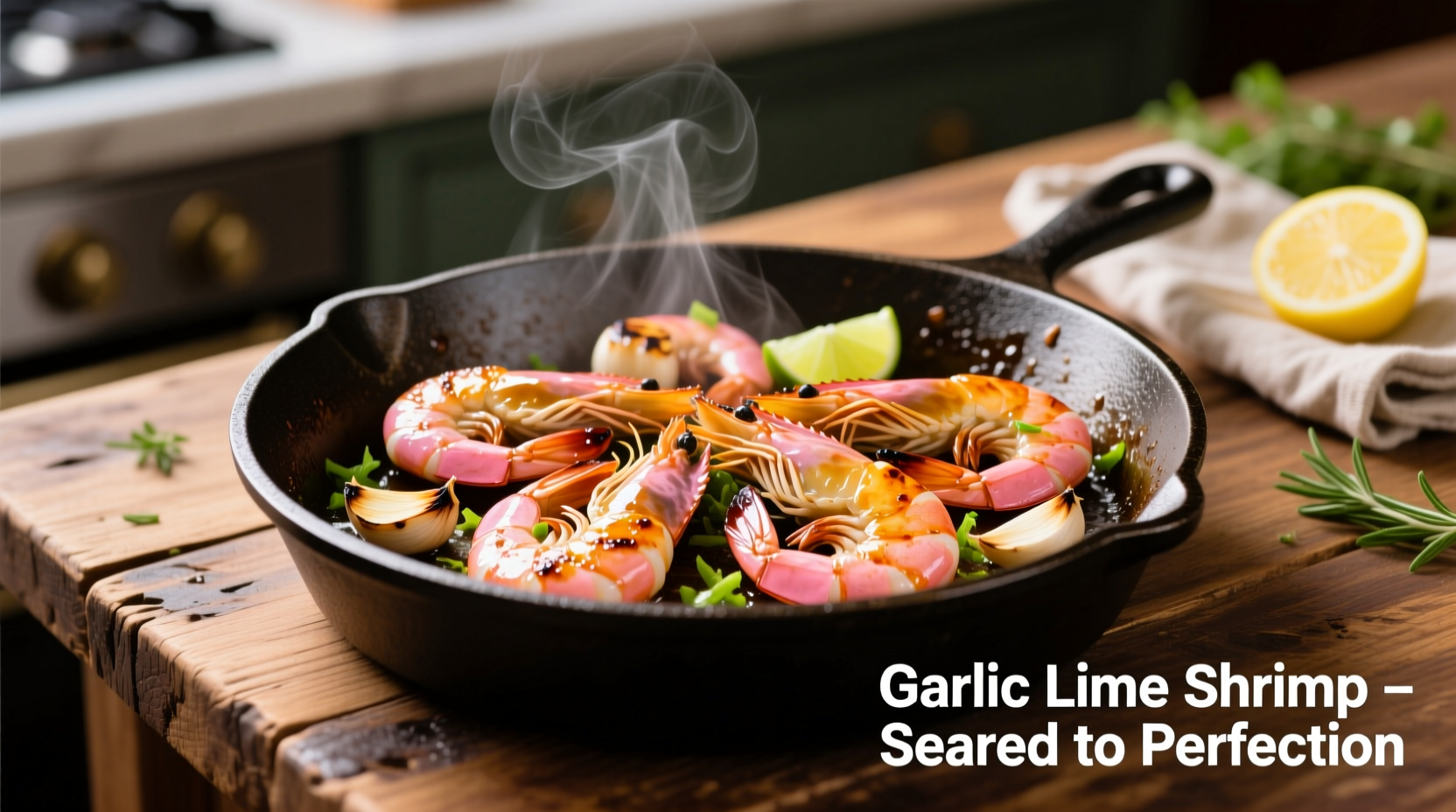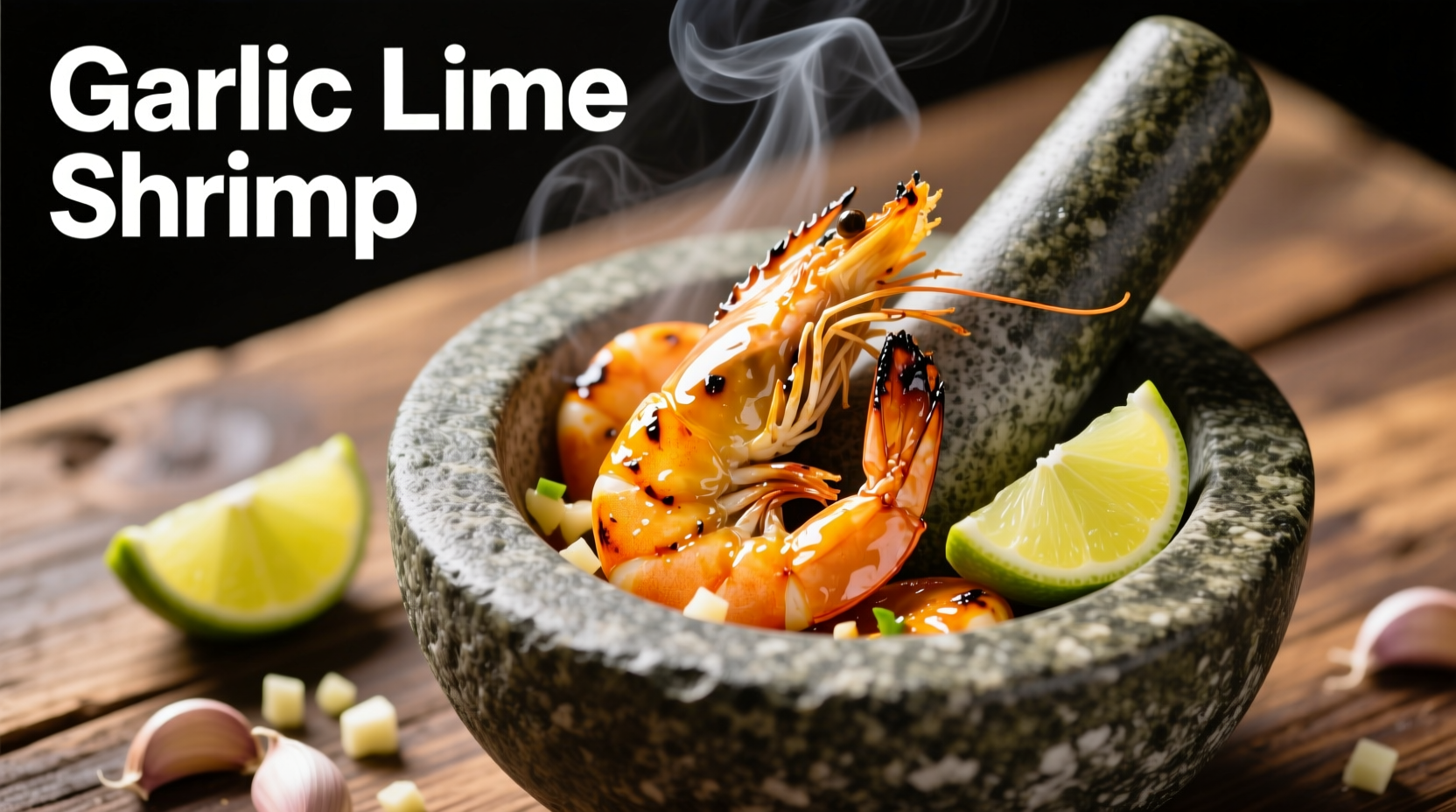The Essential Garlic Lime Shrimp Formula
Mastering garlic lime shrimp requires understanding three critical elements: proper shrimp selection, precise cooking timing, and balanced flavor layering. This universally loved dish combines Mediterranean garlic traditions with Latin American citrus techniques, creating a harmonious flavor profile that works equally well as a weeknight dinner or elegant entertaining option.
Why This Recipe Works Every Time
Unlike many online recipes that drown shrimp in acidic marinades or overcook the protein, this method uses a two-stage approach: a brief 10-minute citrus infusion followed by high-heat searing. The USDA recommends cooking shrimp to 145°F internal temperature, which this technique achieves consistently in 2-3 minutes per side. This prevents the common mistake of rubbery, overcooked shrimp while allowing the garlic to mellow without burning.
| Preparation Phase | Time Required | Critical Success Factor |
|---|---|---|
| Shrimp preparation | 5 minutes | Dry shrimp thoroughly for perfect sear |
| Marinating | 10 minutes | Don't exceed 15 minutes to prevent "cooking" in acid |
| Cooking | 4-6 minutes | High heat with minimal flipping |
Your Ingredient Checklist
Quality ingredients make the difference between good and exceptional garlic lime shrimp. Here's what you need and why each component matters:
Protein Selection
Choose 16/20 count shrimp (16-20 pieces per pound) with the following characteristics:
- Wild-caught Gulf shrimp offer superior sweetness compared to farm-raised varieties
- "Fresh frozen" maintains quality better than "previously frozen" supermarket options
- Shell-on for maximum flavor (remove after cooking)
Flavor Foundation Components
The magic happens through these carefully balanced elements:
- Fresh garlic (3 large cloves, minced) - provides aromatic depth without bitterness
- Lime zest and juice (2 limes) - use zest for concentrated citrus oil, juice for acidity
- Extra virgin olive oil (2 tbsp) - medium smoke point ideal for shrimp
- Unsalted butter (1 tbsp) - adds richness and prevents garlic burning
- Red pepper flakes (1/4 tsp) - subtle heat that complements without dominating

Step-by-Step Cooking Process
Preparation Phase (5 minutes)
- Thaw frozen shrimp in cold water for 10 minutes if necessary
- Pat shrimp completely dry with paper towels - moisture is the enemy of proper searing
- Zest both limes, then juice them (you'll need 3 tablespoons)
- Combine shrimp, 2 tablespoons lime juice, zest, 1 minced garlic clove, salt, and pepper in bowl
- Refrigerate for exactly 10 minutes - any longer and the acid will start to "cook" the shrimp
Cooking Phase (6 minutes)
- Heat olive oil in cast iron skillet over medium-high heat until shimmering
- Add remaining 2 minced garlic cloves and red pepper flakes, sauté 30 seconds until fragrant
- Remove shrimp from marinade (discard marinade) and arrange in single layer
- Cook 2-3 minutes per side until opaque and reaches 145°F internal temperature
- Add butter and remaining 1 tablespoon lime juice, swirl to create emulsified sauce
- Remove immediately from heat to prevent overcooking
Avoiding Common Mistakes
Even experienced cooks make these critical errors with garlic lime shrimp:
- Over-marinating - citrus "cooks" shrimp proteins, leading to tough texture
- Crowding the pan - causes steaming instead of searing (cook in batches if necessary)
- Burning garlic - garlic burns at 325°F, so add it after oil is hot but before maximum heat
- Under-seasoning - shrimp needs generous salt to enhance natural sweetness
Serving Suggestions That Elevate the Dish
While delicious on its own, these pairings transform garlic lime shrimp into a complete meal experience:
- For weeknights: Serve over cilantro-lime rice with quick-pickled red onions
- For entertaining: Present in hollowed avocados with mango salsa topping
- Dietary adaptation: Pair with zucchini noodles for low-carb option
- Unexpected twist: Add 1/4 cup coconut milk at the end for Thai-inspired variation
Storage and Reheating Guidelines
While best served immediately, properly stored garlic lime shrimp maintains quality for:
- Refrigeration: 2 days in airtight container (separate from sauce)
- Reheating: Gently warm in skillet with teaspoon of water to prevent drying
- Freezing: Not recommended - shrimp becomes rubbery upon thawing
When This Recipe Works Best (and When to Choose Alternatives)
Garlic lime shrimp excels in specific contexts but has limitations:
- Ideal for: Quick dinners, warm weather cooking, light meal preferences
- Less suitable for: Cold climates (lacks hearty elements), large gatherings (cooks best in single batches)
- Alternative approach: For meal prep, cook shrimp separately and combine with components just before serving











 浙公网安备
33010002000092号
浙公网安备
33010002000092号 浙B2-20120091-4
浙B2-20120091-4